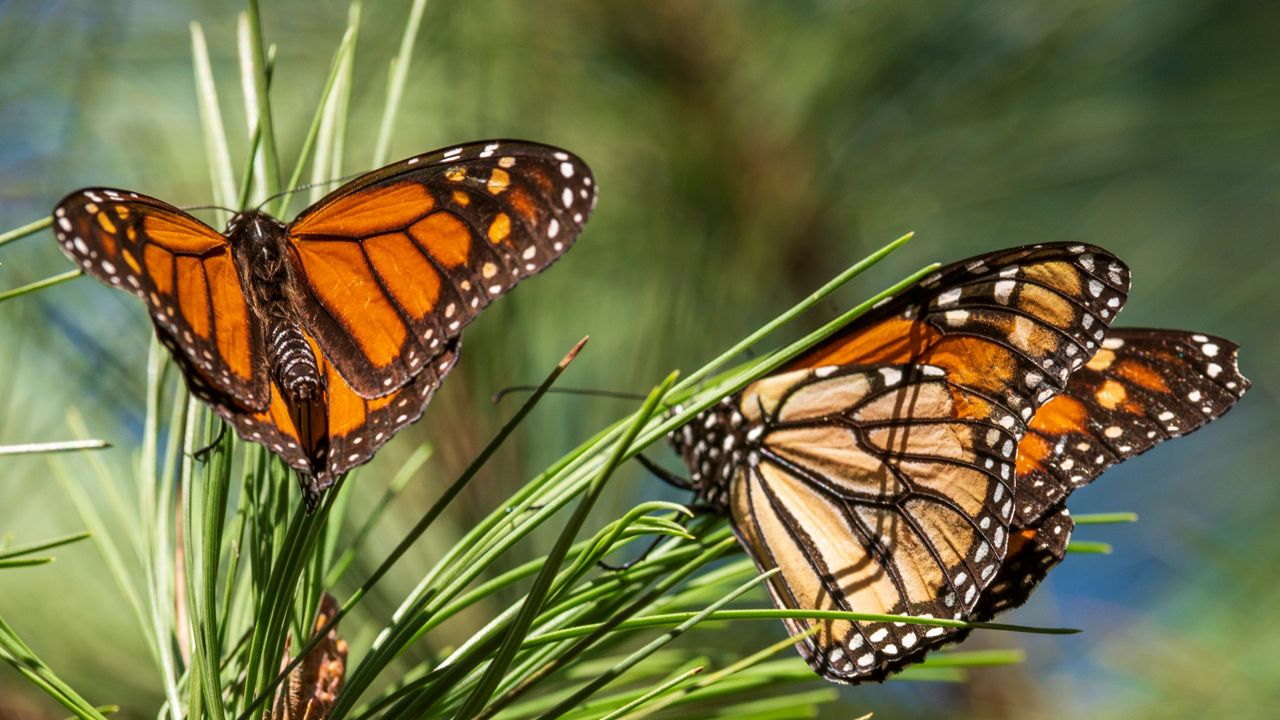October is a magnificent month in Texas, and not just for the obvious reasons. Yes, temperatures are (kind of) dropping, pumpkin spice is in and Friday night lights are shining bright, but there's something else fluttering through the air during this time of year.
Much like many species of birds, monarch butterflies migrate south for the winter. Fortunately for Texans, their path takes them right through the heart of the Lone Star State.
Mid-and-late October is a special time of year for one of our most cherished insect species. During the fall, monarch butterflies make their bi-annual migratory journey across Texas.
To many people, the monarch is the most recognizable butterfly species. With their vibrant black, orange and white coloring and a wingspan that can reach around four inches (big for a bug!), they are easy to spot.
This species makes its home in mountain and woodland environments across the North American continent, but they are hardly stationary. Monarchs are unique in that they make not one, but two migratory journeys each year.
If you see monarch butterflies during mid-and-late October, chances are they are en route to Mexico, where they spend the winter months. Their return flight home will then take them back up through Texas during the spring.
Mexico is an ideal place for monarchs to settle during the winter, as the mountainous regions provide just the right temperature range for them.
One common landing place for monarchs is the oyamel fir forests near Michoacan, where temperatures are above freezing, but rarely exceed around 60 degrees Fahrenheit.
In this climate, the butterflies can conserve energy because they do not have to tap into the fat storage that they have built up. The humidity in Mexico also prevents monarchs from drying out during the winter months, according to the US Fish and Wildlife Service (USFWS).
Now that we know where the monarchs go, what's the Texas tie?
The Lone Star State is unique because it is the one place in the United States where multiple monarch migration paths merge on the way to Mexico. (Try saying that five times fast, and then keep reading.)
This is unofficially called "The Texas Funnel," because many migrating butterflies funnel through the Lone Star State on the way to Mexico. According to Journey North, the population of migrating monarch butterflies is twelve times more concentrated in Texas than in any other state.
Monarchs coming through Texas on their way to Mexico use one of two pathways.
The "Central Flyway" spans from the Red River region down through the Texas Hill Country, and continues southwest toward border towns like Del Rio. The other option is the "Coastal Flyway," which follows the Texas coastline from Beaumont all the way down toward the border in Harlingen.

There are still a handful of factors jeopardizing this organism, and more specifically, its migration pattern. Summer 2023 was one of the hottest on record and extremely dry, as well. And Texans weren't the only ones feeling the effects of the sweltering heat.
In an online piece published by Texas Butterfly Ranch, multiple monarch experts say drought conditions can be a huge setback in migratory patterns for these butterflies.
The reason? Monarchs need to make stops on their migratory journey in order to build up their fat supply, which will sustain them through the winter while they reside in Mexico.
Nectar sources, like milkweed, supply the monarch's fat supply, which can be found in the Texas Hill Country. However, a drier summer means less vegetation and thus fewer nectar sources for the butterflies.
While summer 2023 was especially harsh, drought is not a new issue - nor are issues with migration.
As published by the World Wildlife Organization, data suggests that fewer monarchs have completed the journey down to Mexico in recent years. This is due, in part, to worsening drought conditions and warmer temperature patterns.
Although data suggests less monarch butterflies are migrating because of environmental factors, there is also evidence to support that monarchs are a resilient insect.
As outlined in a detailed article by National Geographic, monarch butterflies are no longer categorized as an endangered species. Instead, they are now considered "vulnerable to extinction." While this is a step down from endangerment, it is still a small improvement.
Andy Davis, a researcher who has devoted a great deal of time to studying monarch migration, titled a blog from Aug. 2023 "DNA provides evidence that the monarch population has not declined." In the blog, Davis helps to contextualize findings from a scientific journal to explain how, contrary to common concerns, the monarch population is holding steady.
Be sure to keep an eye out for these beautiful and fascinating butterflies this fall.
If you're "fluttering" to do more, click here to learn about how you can create your own "Monarch Waystation" - a habitat that will help sustain butterflies on their way to their final migratory destination.
Our team of meteorologists dives deep into the science of weather and breaks down timely weather data and information. To view more weather and climate stories, check out our weather blogs section.



